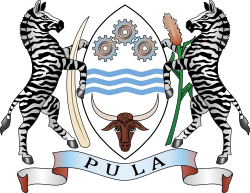

The districts of Botswana are subdivided into sub-districts. The sub-districts are listed below, by district:
Contents
- Central District
- Chobe District
- Ghanzi District
- Kgalagadi District
- Kgatleng District
- Kweneng District
- North-East District
- North-West District/Ngamiland District
- South-East District
- Southern District
- See also
- Notes and references
As of 2017, the sub-districts of Botswana have changed to a number of 23. This was a result of the National Development Plan of April 2017 – March 2023. [1] [2]
All of the separate town councils consist of no sub-districts.
 |
|---|
| Constitution |